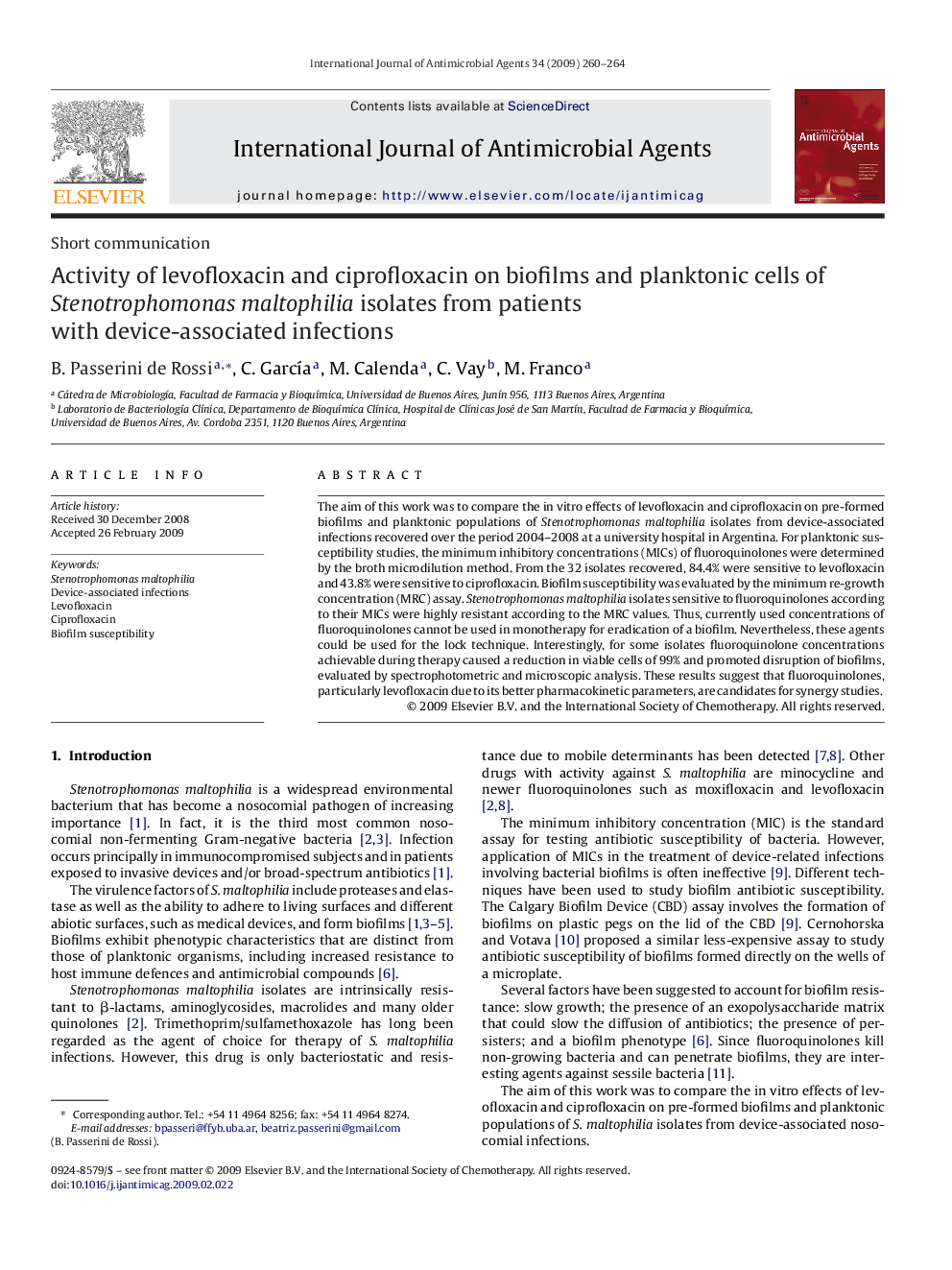| Article ID | Journal | Published Year | Pages | File Type |
|---|---|---|---|---|
| 3360271 | International Journal of Antimicrobial Agents | 2009 | 5 Pages |
The aim of this work was to compare the in vitro effects of levofloxacin and ciprofloxacin on pre-formed biofilms and planktonic populations of Stenotrophomonas maltophilia isolates from device-associated infections recovered over the period 2004–2008 at a university hospital in Argentina. For planktonic susceptibility studies, the minimum inhibitory concentrations (MICs) of fluoroquinolones were determined by the broth microdilution method. From the 32 isolates recovered, 84.4% were sensitive to levofloxacin and 43.8% were sensitive to ciprofloxacin. Biofilm susceptibility was evaluated by the minimum re-growth concentration (MRC) assay. Stenotrophomonas maltophilia isolates sensitive to fluoroquinolones according to their MICs were highly resistant according to the MRC values. Thus, currently used concentrations of fluoroquinolones cannot be used in monotherapy for eradication of a biofilm. Nevertheless, these agents could be used for the lock technique. Interestingly, for some isolates fluoroquinolone concentrations achievable during therapy caused a reduction in viable cells of 99% and promoted disruption of biofilms, evaluated by spectrophotometric and microscopic analysis. These results suggest that fluoroquinolones, particularly levofloxacin due to its better pharmacokinetic parameters, are candidates for synergy studies.
